The Inner Core Muscles: Multifidi
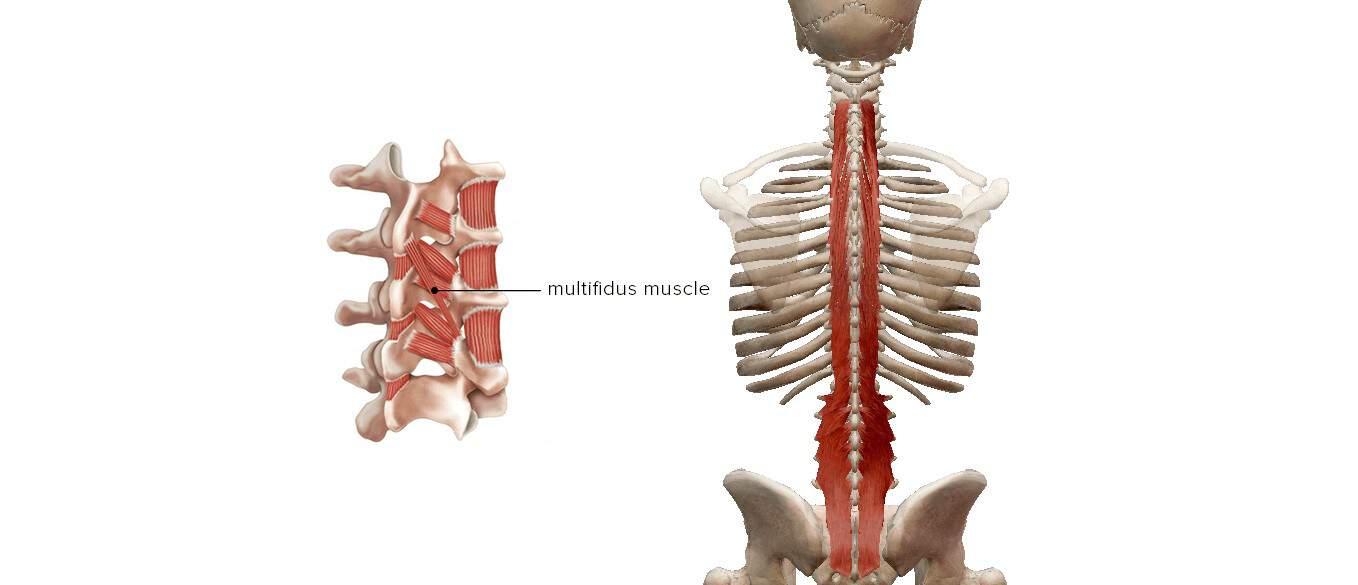
We have always said that the spine holds our torso up, but did you know there are muscles which hold the spine up? Welcome to our second blog in a series of four on the Inner core or the Superhero muscles of the Human Body, and today we will be discussing the multifidi!
The Core
As mentioned in the previous blog on the transversus abdominis, the Core is the powerhouse of our body. It comprises of the diaphragm on the top, the pelvic floor on the bottom, the transversus abdominis in the front, and the multifidi and deep spinal muscles at the back. These are connected through the thoraco-lumbar fascia (a three-layered connective tissue sheet present from the mid to lower back) which pulls the reign of the spine.
The Multifidi or the Supporters
The Multifidus is one of the smallest muscles of the body yet it forms part of the powerhouse muscles that support the spine.
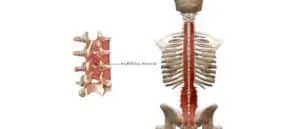
Anatomy
Located deep in the back, the multifidi are numerous muscles which fill up the groove between the transverse processes and the spinous processes on either side of the vertebrae from the cervical to the sacrum. Each multifidus muscle bridges over three to six vertebral levels. They go across the facet joints from bottom to top, forming a Christmas tree like structure behind the spine.
Function
Being local stabilisers, the multifidi hold the vertebrae together. They are responsible for the stability of the spine in the neutral zone. These muscles help take the pressure off the vertebrae and help distribute the weight equally across the spine.
Although small, the multifidi aid in several movements of the spine. When you extend the spine, they prevent the vertebrae from gliding out of place. When we extend the spine, they contracting bilaterally to hold the vertebrae in place. Whereas, when we bend sideways or rotate the spine, they contract unilaterally and protect the spine from over-extending.
The multifidi get activated by the anterior and posterior tilting of the pelvis. Thus, when we give the cue of point your headlights i.e. ASIS forward, you are firing the transversus abdominis and the pelvic floor, which are linked to the multifidi. Essentially, this action is recruiting the multifidi, helping the body maintain a neutral spine position and activating prior to any movement which could load the spine.
How to feel your multifidi engagement
Stand with your feet hip-width apart and parallel. Place your hands on your waist and follow the waist around to the back, until your fingertips feel the protruding spinous processes of the vertebra at the level of the waist. Place the fingertips on the side of the spinous process and take a step forward with one leg. You will feel a little muscle pop like a little knob into your fingertips on the side of the leg that is behind. Switch the leg and see if the right and left side muscles fire evenly.
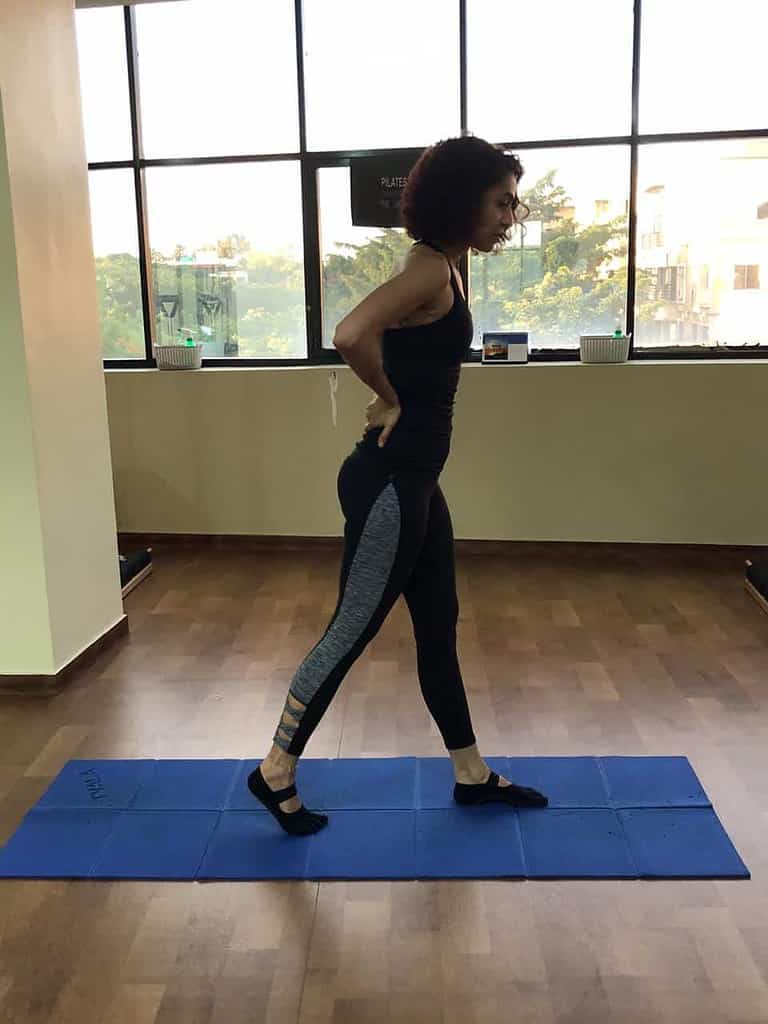
Dysfunction
In low back pain, dysfunction of the local stabilising muscles which comprises of the multifidi and the other muscles of the inner core causes instability or increased movements in the neutral zone. A decrease in the cross-sectional area of the multifidi muscle fibre can lead to this instability and switching off of these muscles, and thus pain. Hence, people with chronic pain (pain over prolonged periods) have a reduced ability to recruit the multifidi to maintain a neutral spine position. Read more about the neutral spine here.
To switch on the multifidi and get them to fire evenly on both sides of the spine, you need to do a core training program. Pilates works the best for low back pain issues because of its rehab component. At Moushu’s Pilates we follow a gradual progression of exercises that build on inner core stability first before moving on the mobility and weight-bearing exercises.
Exercises to activate the Multifidi
We engage from the multifidi, and the core in all exercises. But the following exercises are used to connect into the multifidi for beginners.
Pelvic Clock:
Lie down on your back, with your knees bent and the feet flat on the floor together. Imagine the face of a clock on your pelvis with the12 towards your nose and the 6 towards your tailbone. Gently tilt your pelvis towards 12 and then rock it down towards 6. Do this 4 times and then find a position in between with your headlights facing up towards the ceiling.
Flat Back Bridging:
Building on the connection that you have established with the Pelvic Clock, exhale as you lift your hips and lower back off the floor, up to the base of your shoulder blades. Inhale at the top and exhale as you place the hips back down without rounding the back.
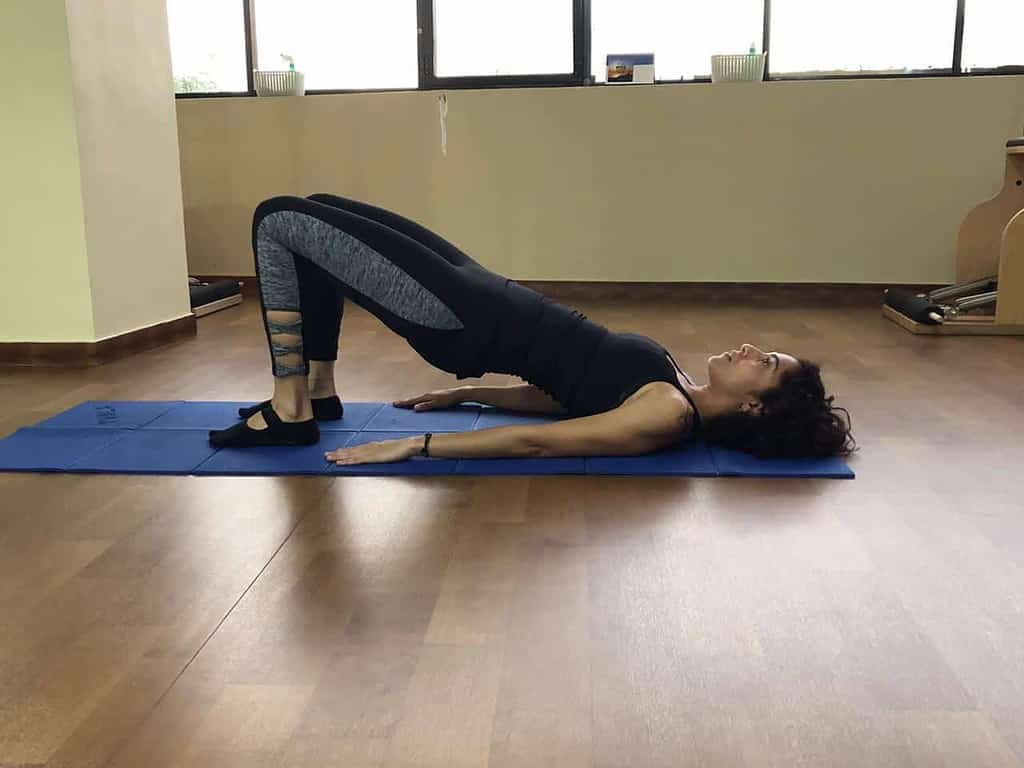
Seated Spine Twist
When you have connected into your core and can maintain a neutral spine while lying down, move on to the seated position and sit up on your sit bones. Imagine that balloons are pulling the top of your head up while your sit bones are grounded on the mat. Extend your legs in front of you, a little wider than hip-distance apart. Without rounding from the back, rotate from your upper and mid-back, while folding your arms across your shoulders like a genie. Come back to the starting position and twist to the other side. Then try the same movement with your arms extended sideways at shoulder height.
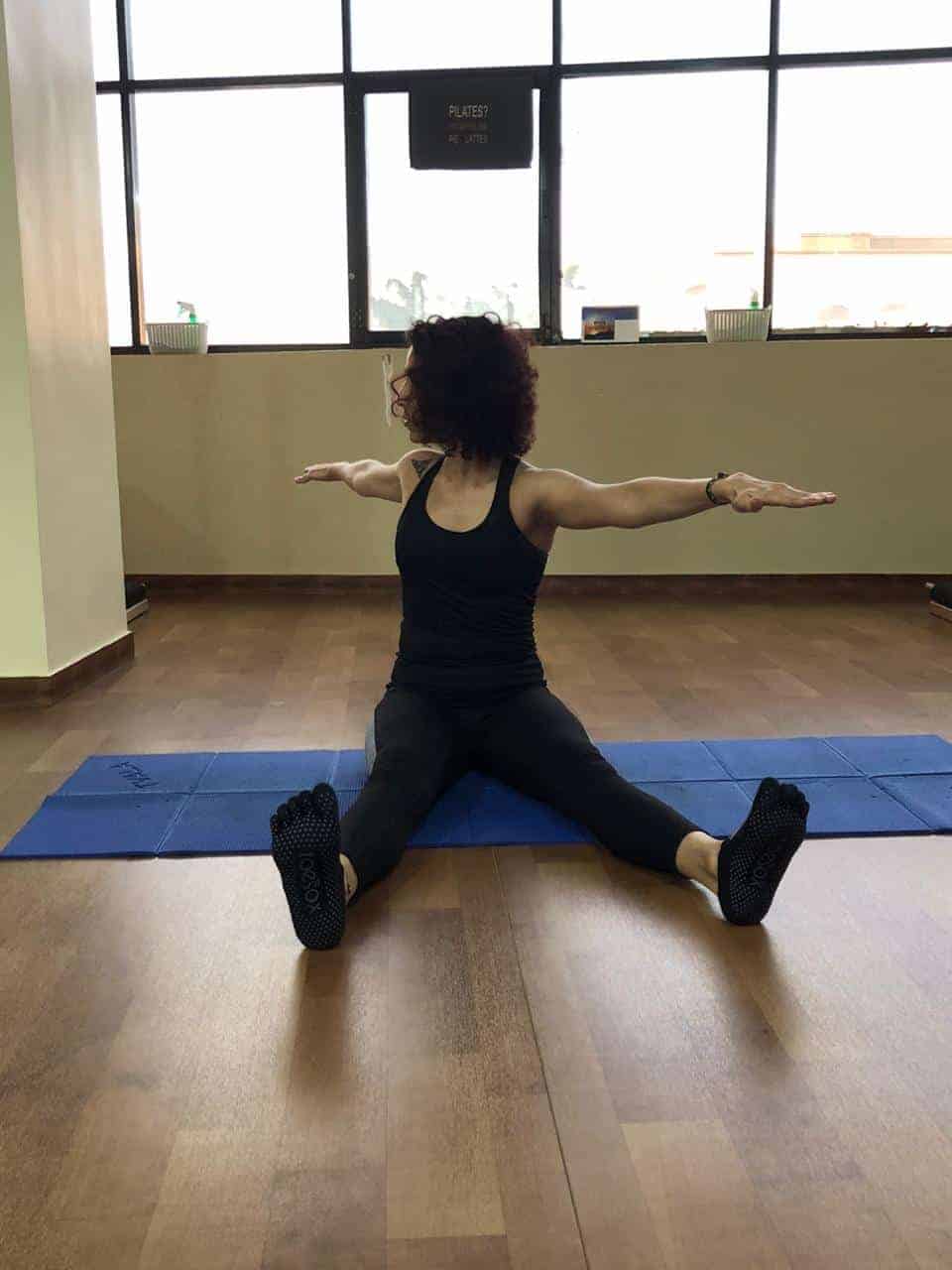
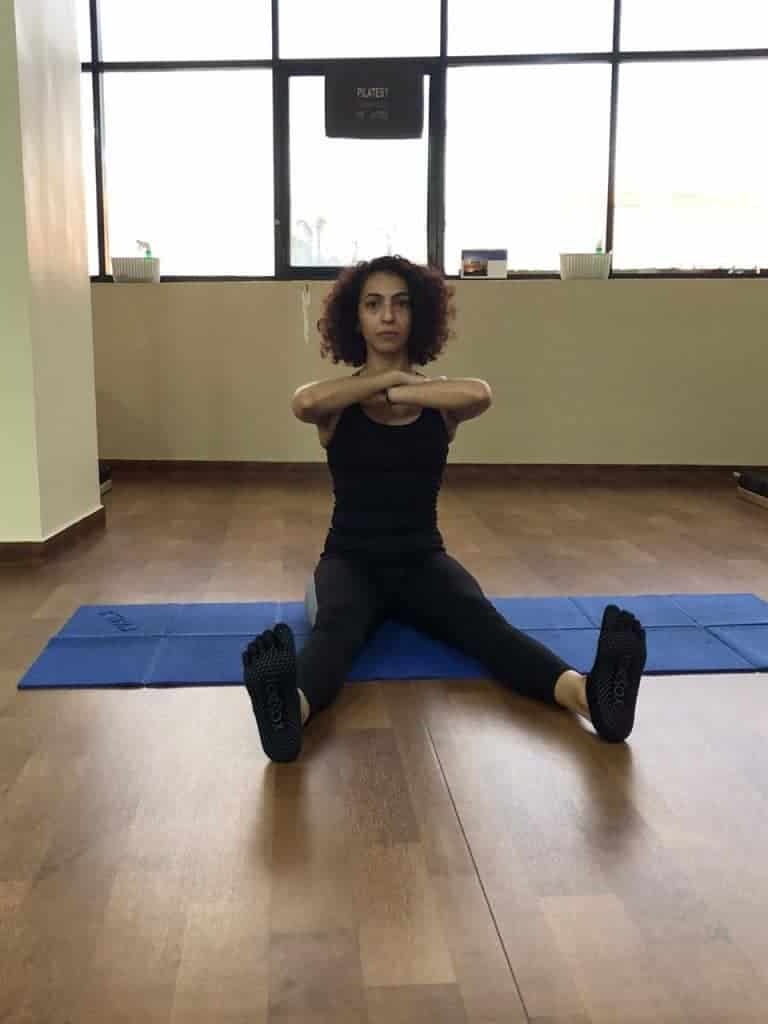
The key here is to see if you can engage the core to keep the lumbo-pelvic in neutral as you layer on more difficult exercises. And this neutral spine position is required in functional activities.
The multifidi maintain a neutral spine and prevent gliding of vertebrae, protecting the spine. This action of the multifidi, and ultimately, the inner core unit is the reason they are called the Core!
In the next two blogs, we shall look at the Diaphragm and Pelvic Floor.
Do you have low back pain? Get assessed by Dr. Moushumi Kuvawala.

Comments
Do you undertake online classes for Pilates ? I would like to know as I am interested, can I have your contact details please – 9920321509
Yes, we do. Please check our classes schedule on https://moushuspilates.com/schedule and call us to join!
Please call on 9822308301 for details!